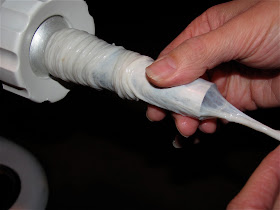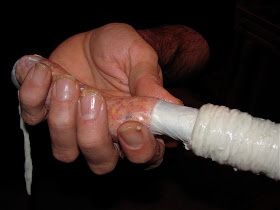Sometimes the best things just sneak up on you. Or, they could swim.
Take these mackerel. Furthest thing from my mind when I walked into the fish store the other day. Absolutely the best thing I came out with.
A lot of people don't like the mackerel. "Too oily," I have heard them complain. "Too fishy."
Imagine that. A fish that tastes like a fish!
As my consigliere (of undisclosed ethnic origin) Gloede would say, Ach du Lieber!
Calm down, Glodes, pour yourself another Strega. I got this one.
See, I happen to like a fish that tastes like its oily, smelly self, and am specifically fond of the mackerel (saba at the sushi bar; possibly my fave, but don't tell that to the uni).
If you are a fan of the fish (and the olive oil and the garlic), then you will want to try this recipe for "oil-cured" mackerel. It is shockingly easy to prepare (trust me on this), and will keep in the fridge for awhile.
Best of all, it will be of no interest whatsoever to people who want their sea creatures to taste like land-based proteins that reside in coops or, if they are lucky (the protein sources, I mean), roam "free" in "ranges." Which will mean more of the tasty fishes for you.
Though not, evidently, for me. I put these mackerel out as an hors d'oeuvres the other night, along with a whole bunch of other cool stuff, and they were the very first thing to disappear. They went so fast, in fact, that all I got to do was dip a couple hunks of bread into the olive oil where the fish had once been swimming. Which is not such a bad thing, I'll admit, but still...
Just my luck to be running with a bunch of smelly fish eaters.
I need some new friends.
Oil-cured mackerel
Recipe from La Cucina Italiana
1 medium onion, quartered
1 medium carrot, halved widthwise
1 celery stalk, halved widthwise
5 sprigs fresh marjoram
2 sprigs fresh rosemary
1 bay leaf
1/2 cup dry white wine
2 1/2 pounds whole mackerel, heads and tails removed (I left them on)
1/3 cup finely chopped flat-leaf parsley
1 garlic clove, finely chopped (I may have upped this a bit; okay, I did)
3-4 cups extra-virgin olive oil (I used less)
Cover onion, carrot, celery, marjoram, rosemary and bay leaf with cold water by 3 inches in a 4- to 5-quart pot; add wine. Bring to a simmer and cook for 10 minutes. Add mackerel, return stock to a simmer and cook for 5 minutes more. Remove from heat and let mackerel cool to room temperature in stock.
Transfer mackerel to a cutting board; remove and discard skin and bones. Transfer fish to a bowl. Sprinkle with parsley and garlic, then add oil to cover by 1/2 inch. Chill in refrigerator, covered, for at least 12 hours and up to 10 days. Bring to room temperature before serving.



























